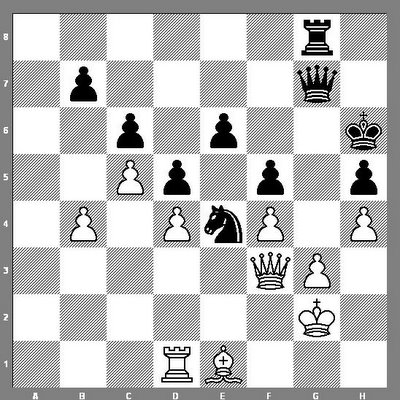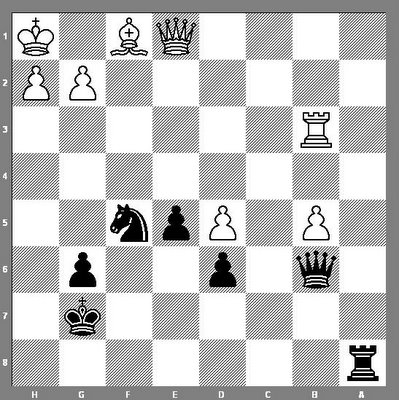Andrew Martin and The Basics of Winning Chess Middlegame Tips 1. View the whole board
It has been a while since i posted about the Andrew Martin ChessBase DVD i am watching, which is due to always having limited time to spend on studying chess, which in turn causes you to choose what to do, and when to do it everytime. Anyway, i have now reached the middlegame section, in which Andrew Martin hands out tips on the middlegame. Now, the middlegame section consists of 3 examples that show the importance of viewing the whole board. Let us start with example one.
Example one

In example one Andrew Martin tells you, that as a coach, he encounters a lot of players who concentrate too much on one specific area of the board. And that because of that, they miss oppurtunities that have arisen elsewhere on the board. Now, take a look at the above position and try to find out what the best continuation is. It is black to move. You can find the solutions to the examples at the end of this post. But take some time and try to figure it out for yourself first. You might improve your game with it :-)
Example two

Example two is from an actual game between Karpov (white) and Taimanov (black) played in 1977, which goes to show you it takes a tremendous vision of the whole board to come up with something like Taimanov did. Once again, take some time and try to figure it out for yourself. It's black to move.
Now, the third and final example is in fact a complete game in which white displays tremendous board vision throughout the entire game (click to replay). To end this middlegame section, Andrew Martin leaves you with a usefull exercise and a tip, which he also recommends to all of his students. The exercise is, that before the start of a game, you should run your eyes along the perimiters of the board a few times, in order to stimulate your board vision. And the tip is, that before the start of a game you could try and splash some cold water on your eyebrows, which keep the eyes and brains fresh.
Solution to example one.
Solution to example two.






0 Comments:
Post a Comment
Subscribe to Post Comments [Atom]
<< Home